
|

|
| 1 Kings-Nehemiah, 950-332 BC | |||||||||||||||||||||||||||||||||||||||||||||||||||||||||||||||||||||||||||||||||||||||||||||||||||||||||||||||||||||||||||||||||||||||||||||||||||||||||||||||||||||||||||||||||||||||||||||||||||||||||||||||||||||||||||||||||||||||||||||||||||||||||||||||||||||||||||||||||||||||||||||||||||||||||||||||||||||||||||||||||||||||||||||||||||||||||||||||||||||||||||||||||||||||||||||||||||||||||||||||||||||
|
|||||||||||||||||||||||||||||||||||||||||||||||||||||||||||||||||||||||||||||||||||||||||||||||||||||||||||||||||||||||||||||||||||||||||||||||||||||||||||||||||||||||||||||||||||||||||||||||||||||||||||||||||||||||||||||||||||||||||||||||||||||||||||||||||||||||||||||||||||||||||||||||||||||||||||||||||||||||||||||||||||||||||||||||||||||||||||||||||||||||||||||||||||||||||||||||||||||||||||||||||||||
|
|||||||||||||||||||||||||||||||||||||||||||||||||||||||||||||||||||||||||||||||||||||||||||||||||||||||||||||||||||||||||||||||||||||||||||||||||||||||||||||||||||||||||||||||||||||||||||||||||||||||||||||||||||||||||||||||||||||||||||||||||||||||||||||||||||||||||||||||||||||||||||||||||||||||||||||||||||||||||||||||||||||||||||||||||||||||||||||||||||||||||||||||||||||||||||||||||||||||||||||||||||||
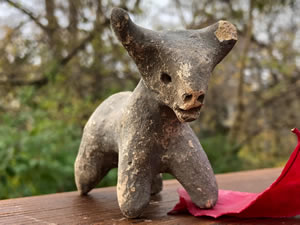 |
1000-600 BC Bull Figurine Terra cotta bull figurine from 1000-600 BC made grey-slipped with tapered legs, curved horns and details of a face. |
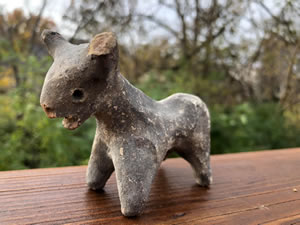 |
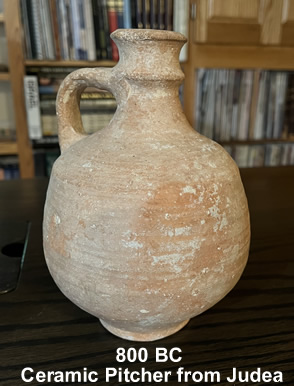 |
800 BC Ceramic Pitcher |
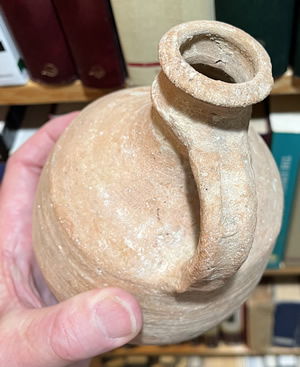 |
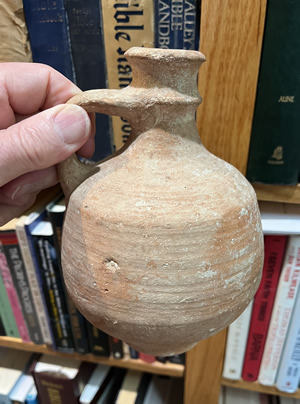 |
800 BC Ceramic Pitcher
Tyler pretends to pour oil from an 800 BC clay vessel from Judea into a 1500 BC lamp > |
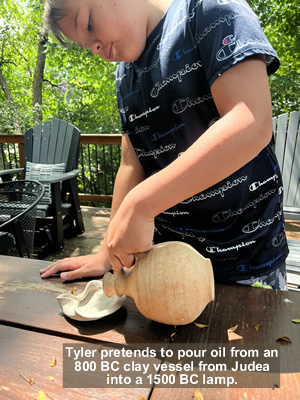 |
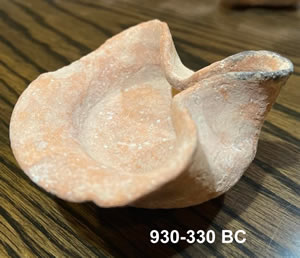 |
930-330 BC Oil Lamp |
|
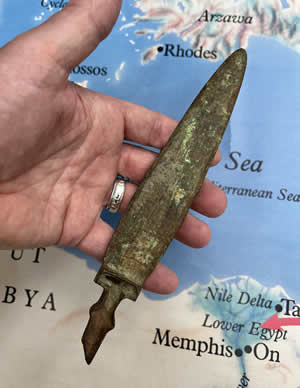 |
1000-600 BC Bronze Dagger Bronze Dagger with leaf shaped blade, narrow incised midrib and a handle with a vertical flange designed to hold an inlay of wood or bone to decorate the handle.
< side one side two > |
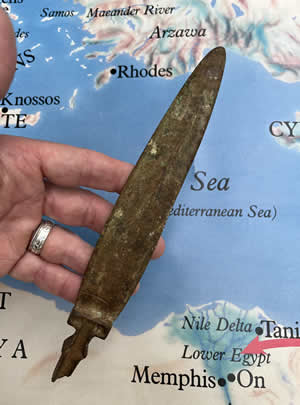 |
 |
1000-600 BC Bronze Dagger |
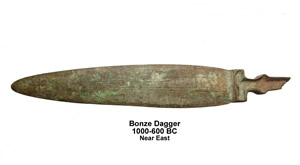 |
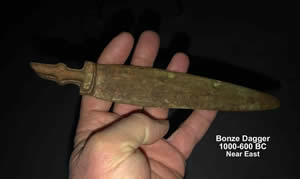 |
1000-600 BC Bronze Dagger |
|
 |
Artaxerxes' Wine Bowl possibly handled by Nehemiah
(Click on photo to open a larger image.)
|
|
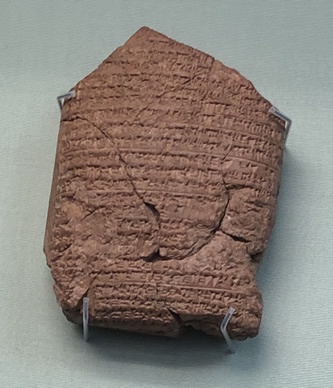 |
Nebuchadnezzar's capture of Jerusalem is recorded on this official Babylonian document that chronicles Nebuchadnezzar's reign during the years of 605-595 BC. This clay tablet records that Jehoakim king of Judah surrendered Jerusalem |
|
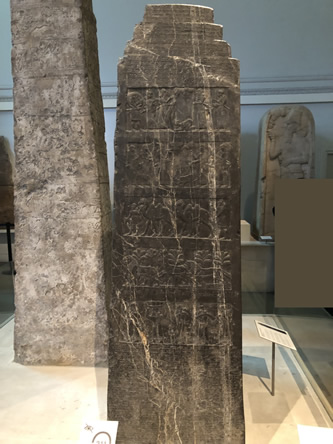 |
Shalmaneser's Black Obelisk both records and provides an image of Jehu bringing tribute in Side A in the 2nd Row. Jehu is on his hands and knees with his face on the ground before Shalmaneser. Israel tribute bears are also seen several times on this obelisk.
See more images of the Siege of Lachish detail page HERE |
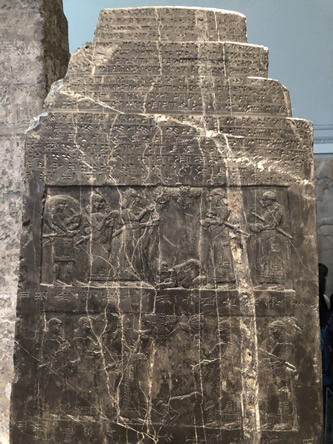 |
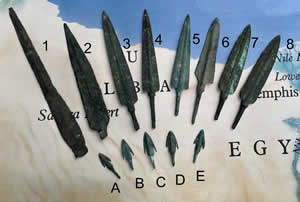 |
1000-600 BC Arrowheads Bronze Arrowheads from the Middle East 1000-600 BC |
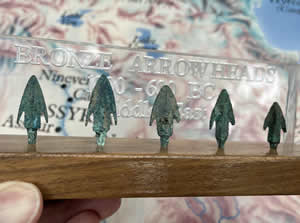 |
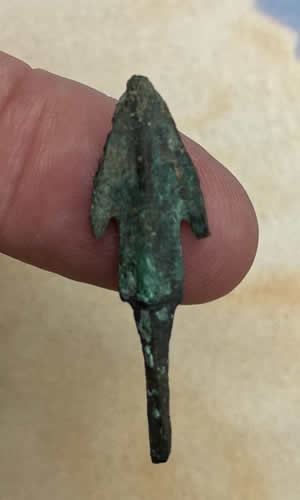 |
1000-600 BC Arrowheads Bronze Arrowheads from the Middle East 1000-600 BC
|
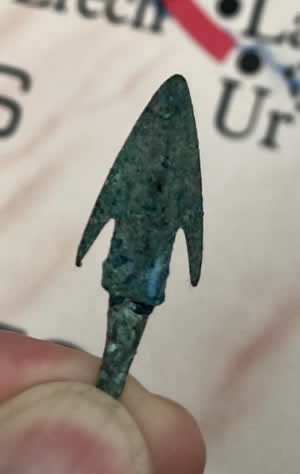 |
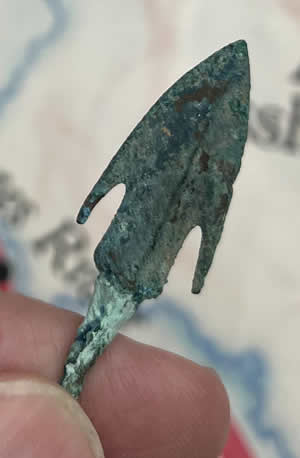 |
 |
|
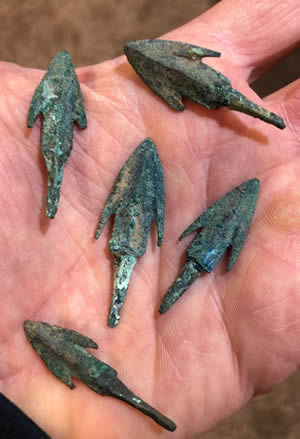 |
1000-600 BC Arrowheads Bronze Arrowheads from the Middle East 1000-600 BC |
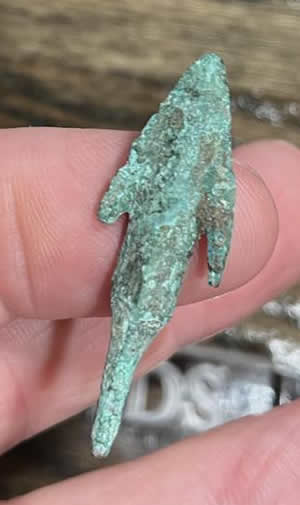 |
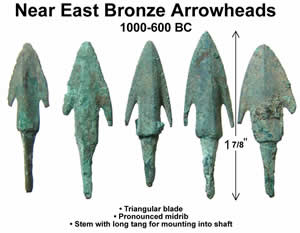 |
||
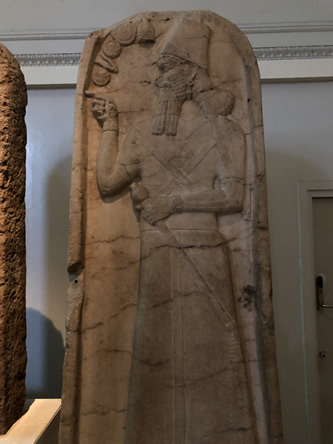 |
Shamshi-adad V (823-811) from Nimrud | |
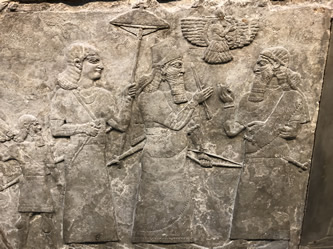 |
Ashurnasirapal II in the center with weapons meeting a high official after winnint the battle. An attendant protects him with an umbrella while his winged god hovers over the greeting. | |
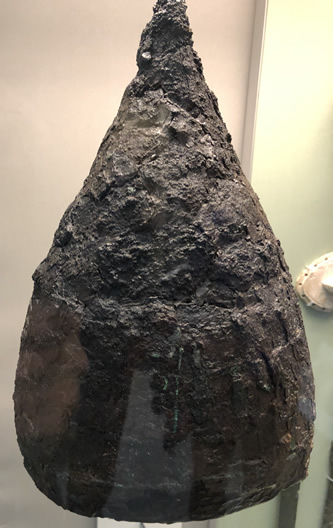 |
Assyrian helmet designed with a point to deflect blows and missiles. It is made with iron decorated with bronnze inlay that has now turned green. The design is a procession around the helmet showing the king surrounded by attendants and archers.
(Click on photo to open a larger image.) |
|
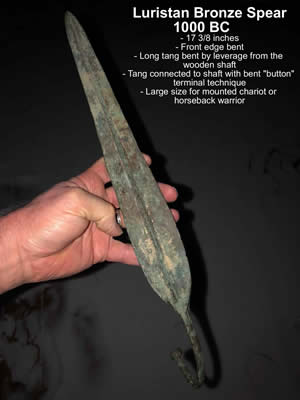 |
1000-700 BC Spear Point Bronze Spear Point 17 3/8 inches long used by mounted chariot or horseback warrior. The tang has been bent most likely by leverage from the wooden shaft on impact. There is an intentional formed perpendicular button bend to secure this spear point to a shaft. But, there is an additional impact bend on this spear point. < side one side two > |
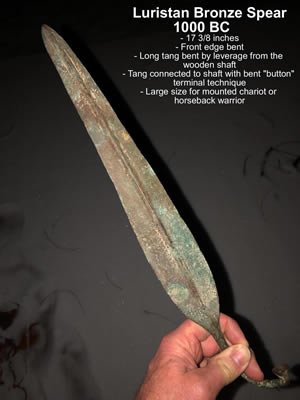 |
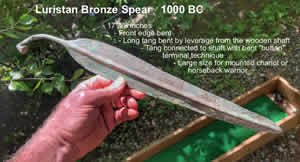 |
1000-700 BC Spear Point
|
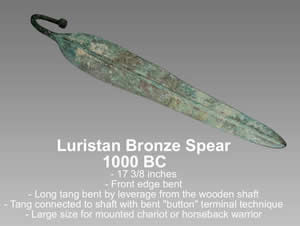 |
 |
1000-700 BC Bronze Spear Points < Bronze Spear Point and six Arrow Points
Three Spear Points from
< Three Spear Points from 1000-700 BC |
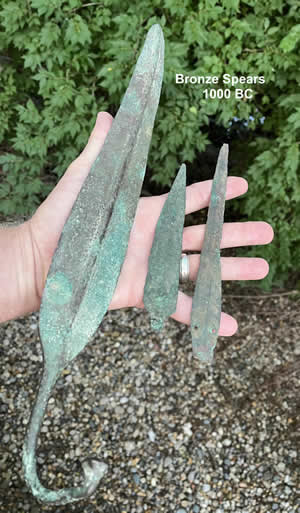 |
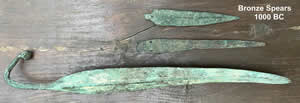 |
||
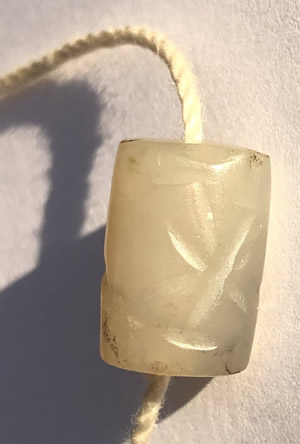 |
SEALS 800-600 BC Cylinder Seal in |
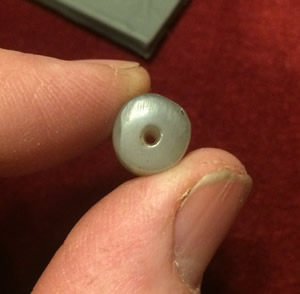 |
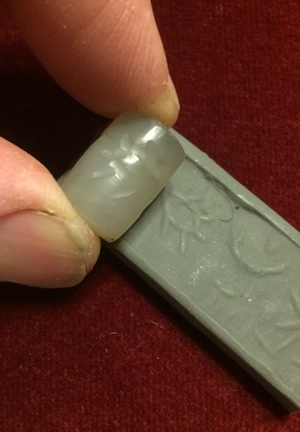 |
800-600 BC - Winged Genie |
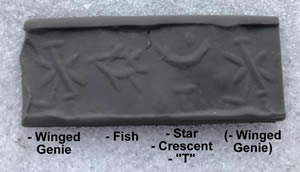 |
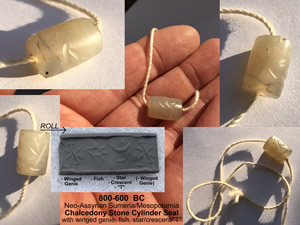 |
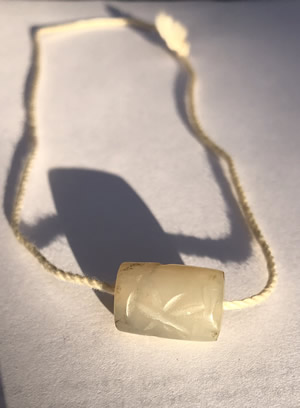 |
|
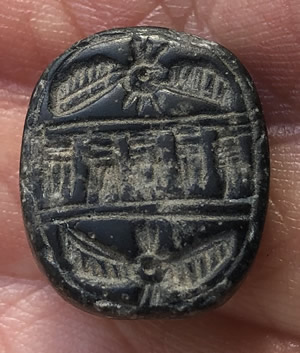 |
700 BC Seal in Black Hued Stone Image on 700 BC seal |
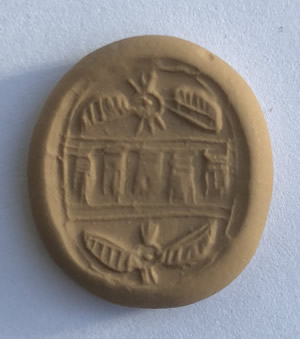 |
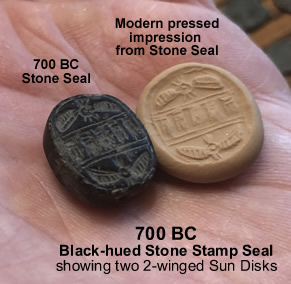 |
700 BC Seal and pressed modern image or a modern bulla made from a 700 BC seal. |
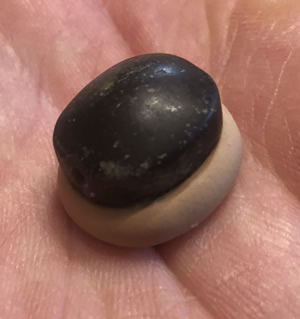 |
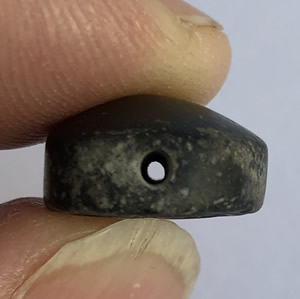 |
700 BC < Suspension Hole in Seal Back of Seal > |
 |
 |
700 BC Seal in Black Hued Stone |
 |
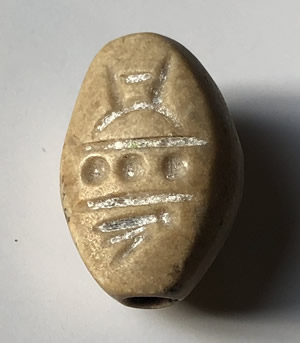 |
500 BC Phoenician Seal |
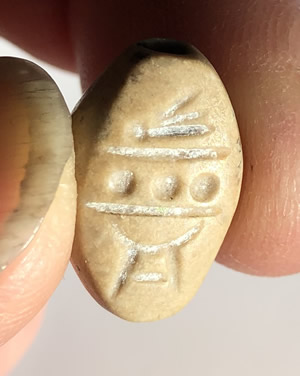 |
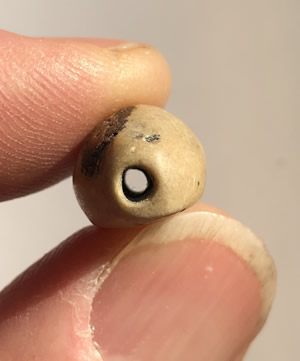 |
500 BC Phoenician Seal < Suspension Hole Back of the seal > |
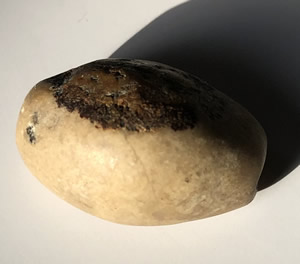 |
 |
500 BC Phoenician Seal |
 |
 |
500 BC Seal Black Stone with Geometric Design on Front with Bird Perched in Center |
 |
 |
500 BC < Suspension Hole Backside shows face |
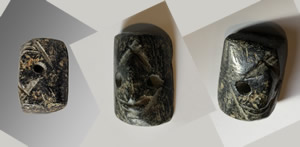 |
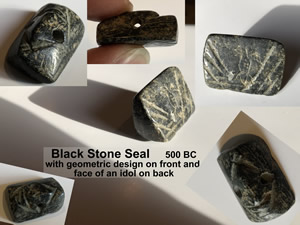 |
500 BC Seal Black Stone with Geometric Design on Front with Bird Perched in Center Back shows face of an |
|
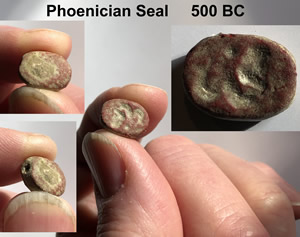 |
500 BC Red Stone Phoenician Seal with Engraved Side |
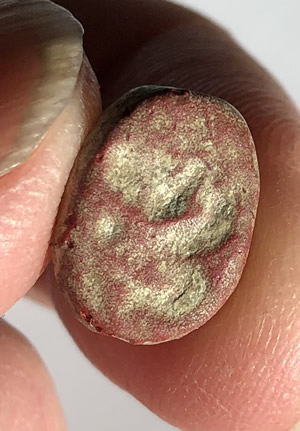 |
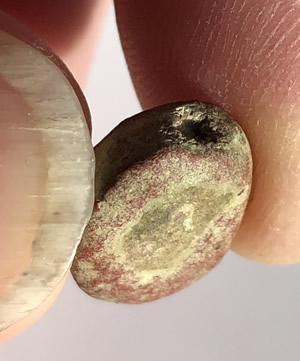 |
500 BC Red Stone Phoenician Seal < Suspension Hole Backside of Seal > |
 |
 |
500 BC Phoenician Scaraboid Seal Backside and |
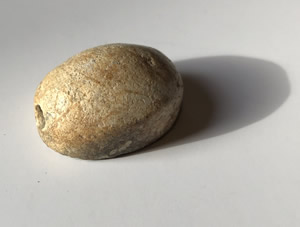 |
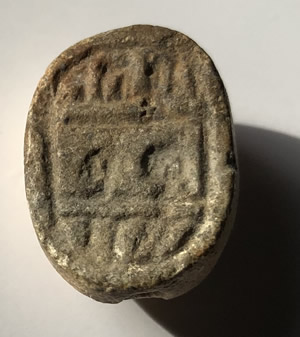 |
500 BC Phoenician Scaraboid Seal Front design shows |
|
 |
Babylonian Chronicles for the years 615-609 which includes the fall of Nineveh to Nabopolassar's son and general, Nebuchadnezzar. Also in this chronicle is the record of a treaty with Cyaxares the king of the Medes whose granddaughter married Nebudhadnezzar and it traditionally believed it is for her that Nebuchadnezzar built the hanging gardens. | |
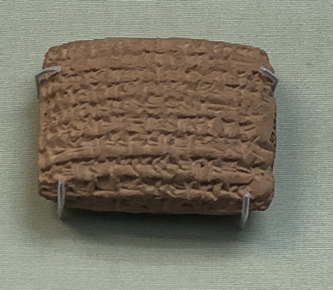 |
Belshazzaris mentioned on this clay tablet from 545 BC and dated as the 24th day of Kislimu in the 11 year of Nabonidus. This clay document mentions a slave of Belshazzar. It was found in Borsippa. | |
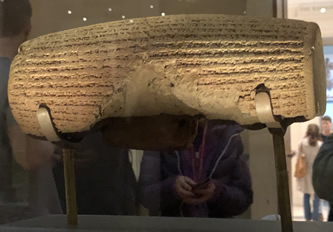 |
Cyrus Cylinder | |
 |
From Nebuchadnezzar's throne room. This is a lion made of glazed bricks of blue, yellow and white. | |
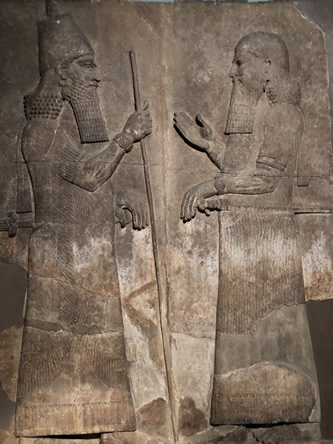 |
King Sargon and his son, Sennacerib, the next king of Assyria | |
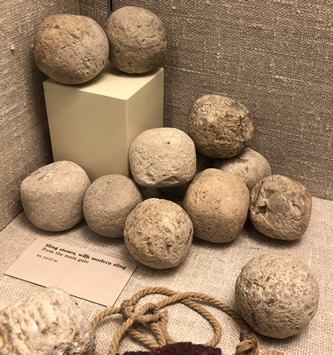 |
Sling stones used by the Assyrians at the Judean stronghold of Lachish in Judea in 701 BC
(Click on photo to open a larger image.) |
|
 |
Lamassu or cherubim designed as human-headed, eagle-winged, bulls or lions that protected Sargon's palace in 713 BC in Khorsabad (ancient Dur Sharrukin). These images are carved from a single block and are about 14 feet high. | |
 |
Protecting Ashurnasirpal II throneroom in Nimrud. This is one of two Human headed winged lions or cherubim.
(Click on photo to open a larger image.) |
|
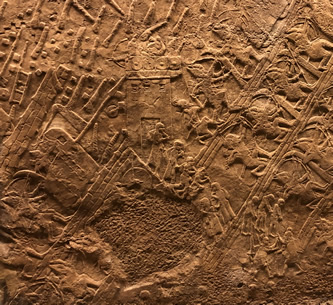 |
Sennacherib siege of Lachish at the wall of the city. Impaling the rebels and taking away the captives
Israelite rebels appear before Sennacherib for judgment and execution See more images of the Siege of Lachish detail page HERE |
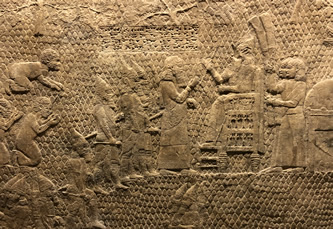 |
 |
Ashurnasirpal II (883-859 BC) ...see more details HERE Ashurnasipal II is the king seen behind the Siege Engine in the gypsum wall panel relief to the left. It provides details of events in the years 865-860 BC and was found in the northwest palace in Nimrud or ancient Kalhu.
See more images of Ashurnasirpal II HERE. |
 |
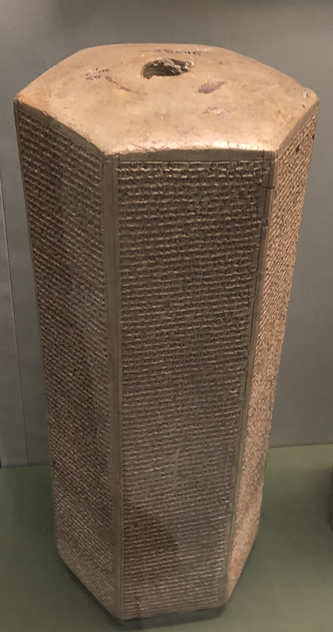 |
Sennacherib Prism Sennacherib mentions Hezekiah
More images of the
(Click on photo to open a larger image.) |
 |
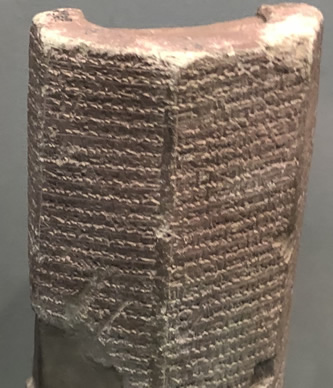 |
||
 |
||
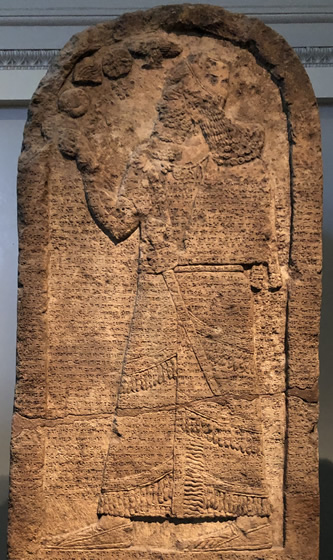 |
||
 |
||
 |
||
 |
||
 |
||
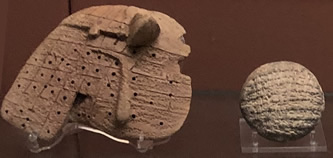 |
||
 |
||
Tiglath-pileser III
|
||
 |
||
 |
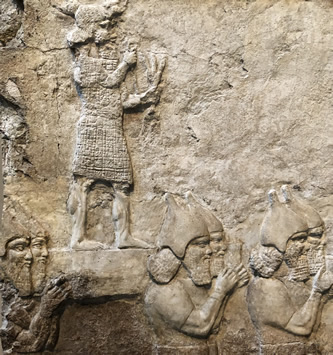 |
|
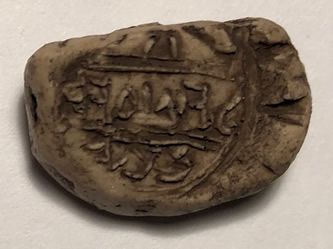 |
Isaiah the Prophet Bulla (replica) The bullae says: "Belonging to Isaiah the (p)rophet" This was found on the Ophel just south of the Temple Mount near the location a bulla of Hezekiah was found. |
|
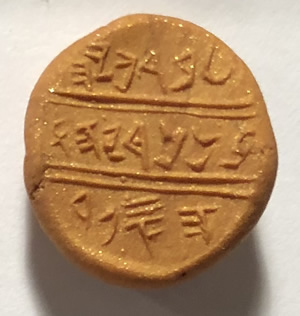 |
Bulla of Jeremiah's scribe Baruch son of Neriah. (replica) The original is in the Israel Museum and has a visible fingerprint in the upper right center. First line on bulla says: "Belonging to Baruch" Second line on bulla says: Third line on bulla says: |
Bible references from the book of Jeremiah: "So Jeremiah called Baruch son of Neriah, and while Jeremiah dictated all the words the Lord had spoken to him, Baruch wrote them on the scroll. Then Jeremiah told Baruch, “I am restricted; I am not allowed to go to the Lord’s temple. So you go to the house of the Lord on a day of fasting and read to the people from the scroll the words of the Lord that you wrote as I dictated. Read them to all the people of Judah who come in from their towns. Perhaps they will bring their petition before the Lord and will each turn from their wicked ways, for the anger and wrath pronounced against this people by the Lord are great.” Baruch son of Neriah did everything Jeremiah the prophet told him to do; at the Lord’s temple he read the words of the Lord from the scroll. |
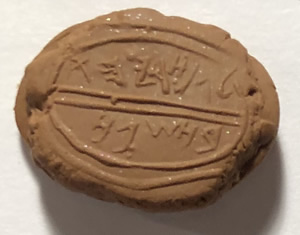 |
Gemariah, the son of Shapan. (replica) First line on bulla says: "Belonging to Gemariah" Second line on bulla says: "son of Shapan" Shapan was the scribe who read the lost book of the law to King Josiah according to 2 Kings 22:4-10: “In the eighteenth year of King Josiah, the king sent |
In the ninth monthof the fifth year of Jehoiakim son of Josiah king of Judah, a time of fasting before the Lord was proclaimed for all the people in Jerusalem and those who had come from the towns of Judah. From the room of Gemariah son of Shaphan the secretary, which was in the upper courtyard at the entrance of the New Gate of the temple, Baruch read to all the people at the Lord’s temple the words of Jeremiah from the scroll.When Micaiah son of Gemariah, the son of Shaphan, heard all the words of the Lord from the scroll, he went down to the secretary’s room in the royal palace, where all the officials were sitting: Elishama the secretary, Delaiah son of Shemaiah, Elnathan son of Akbor, Gemariah son of Shaphan, Zedekiah son of Hananiah, and all the other officials. After Micaiah told them everything he had heard Baruch read to the people from the scroll, all the officials sent Jehudi son of Nethaniah, the son of Shelemiah, the son of Cushi, to say to Baruch, “Bring the scroll from which you have read to the people and come.” So Baruch son of Neriah went to them with the scroll in his hand. They said to him, “Sit down, please, and read it to us.” So Baruch read it to them." (Jeremiah 36:4-15) |
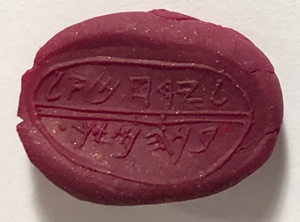 |
Jerahmael Bulla (replica) First line on bulla says: Second line on bulla says: |
"Whenever Jehudi had read three or four columns of the scroll, the king cut them off with a scribe’s knife and threw them into the firepot, until the entire scroll was burned in the fire. The king and all his attendants who heard all these words showed no fear, nor did they tear their clothes. Even though Elnathan, Delaiah and Gemariah urged the king not to burn the scroll, he would not listen to them. Instead, the king commanded Jerahmeel, a son of the king, Seraiah son of Azriel and Shelemiah son of Abdeel to arrest Baruch the scribe and Jeremiah the prophet. (Jeremiah 36:23-26) |
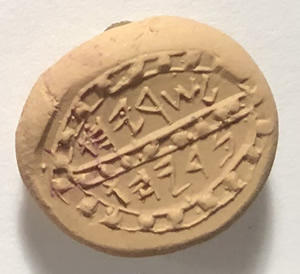 |
Bulla of Seriah son of Neriah. (replica) Seriah is recorded as the son of Neriah that served as a scribe in the days of Jeremiah and Baruch in Jeremiah 51:59. Seraiah son of Neriah was the brother of Baruch son of Neriah. Both brothers were scribes. Seraiah went with Judah's king Zedekiah to Babylon to meet with King Nebuchadnezzer. First line on bulla says:"Belonging to Seriah" Second line on bulla says: "son of Neriah" |
"The word that Jeremiah the prophet commanded Seraiah the son of Neriah, son of Mahseiah, when he went with Zedekiah king of Judah to Babylon, in the fourth year of his reign. Seraiah was the quartermaster. Jeremiah wrote in a book all the disaster that should come upon Babylon, all these words that are written concerning Babylon. And Jeremiah said to Seraiah: “When you come to Babylon, see that you read all these words, and say, ‘O LORD, you have said concerning this place that you will cut it off, so that nothing shall dwell in it, neither man nor beast, and it shall be desolate forever.’ When you finish reading this book, tie a stone to it and cast it into the midst of the Euphrates, and say, ‘Thus shall Babylon sink, to rise no more, because of the disaster that I am bringing upon her, and they shall become exhausted.’” Thus far are the words of Jeremiah." (Jeremiah 51:59-64) |
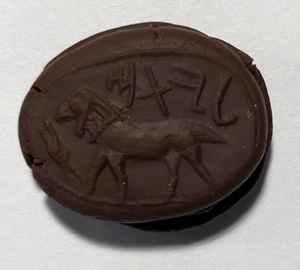 |
Jotham Bulla (750-735 BC) (replica) |
|
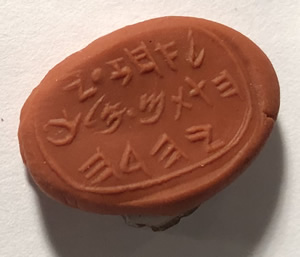 |
Ahaz Bulla (735-715 BC) (replica) |
|
 |
Hezekiah Bulla (715-686 BC) (replica)
(Click on photo to open a larger image.) |
|
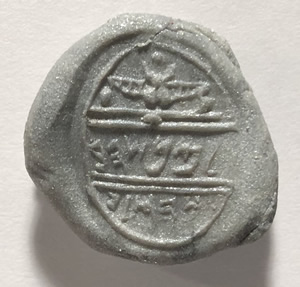 |
Manasseh Bulla (697-642 BC) (replica) |
|
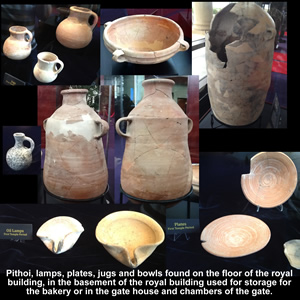 |
701-586 BC Pithoi, lamps, plates jugs and bowls found in the Water Gate and the connected royal building, bakery, gate house and chambers of the gate. These pithoi were placed there around 701 BC in preparation for the Assyrian invasion. They were crushed and buried in 586 with the Babylonian destruction of Jerusalem. |
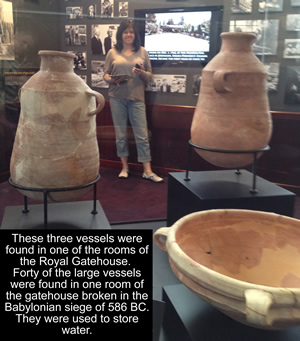 |
 |
701-586 BC A pithos, or large storage jar, was placed in the Water Gate of the Jerusalem’s Eastern Wall around 701 BC in preparation for the Assyrian invasion. They were crushed and buried in 586 BC with the Babylonian destruction of Jerusalem. |
|
Photos were taken by Galyn Wiemers of All images may be downloaded, |
Bible teaching audio, video, notes and |